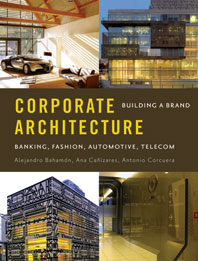There's something funny about architectural theory. It takes the building—one of the heaviest and most solid artifacts of human production—and evacuates it of any relation to the physical world. Houses cease to be made up of two-by-fours and vinyl siding and become ethereal conduits for spatial memory. Bricks and stone are obsessed over for their psychic weight, but little effort is made to understand how a wall is constructed, or the tortuous paths of a material to the construction site.
Buildings Must Die would seem, at first glance, to run counter to this unfortunate tendency. Authors Steven Cairns and Jane M. Jacobs—professors at Singapore satellite locations of ETH and Yale, respectively—set out to reinstill of the physical stuff of buildings and their inevitable decay and ruin. A series of words—decay, obsolescence, disaster, ruin, demolition—serve as guideposts to negotiate this relatively overlooked terrain.
Yet, for Cairns and Jacobs, these words remain just that— disembodied signifiers that fuel an often aimless wordplay. How else to explain, for instance, the reference-jumping chapter on “decay”? It begins with what “decay” means to biologists, then to physicists. It looks at Le Corbusier's obsession with newness (the opposite of decay?) and then turns to Alois Riegl's classification of the ways to perceive the physical decay of monuments. The chapter winds its way through the preservation practices of DOCOMOMO, ideas from Kevin Lynch, recent work by François Roche. And so on.
The first problem is that the authors cited do not debate one another directly or even engage in a conversation across time—they merely use the same word to describe different things. There is no attempt at constructing a history of the concept of “decay” as it has evolved within architectural thinking. Meanwhile, Cairns and Jacobs contribute very little of their own voices and add almost no original research. The places where they do—mostly case studies of structures faced with uncertain fates because of perceived physical degradation—are the best parts of the book. But these are overwhelmed by the rest, which can read like someone telling you about their architectural-theory book club. Many chapters end with a series of names—Freud, Lacan, Derrida, Deleuze—that recall only the most arcane ramblings on architecture from the past 30 years.
This is not to say there isn't something intrinsically interesting about the topic of this book. The two authors have surveyed a large range of sources on what remains a mostly overlooked subject. But it is hard to deny the irony of using such a conceptual approach to a topic that is concerned with the physical, material state of buildings. Buildings themselves, of course, have innumerable stories to tell us about the transient nature of architecture—of how an ineluctable decay haunts every seemingly stable presence. Cairns and Jacobs would have done well to listen more to the buildings and less to the theorists.
Aleksandr Bierig is a Ph.D. student at Harvard’s Graduate School of Design and a former editorial assistant at Architectural Record.








Post a comment to this article
Report Abusive Comment